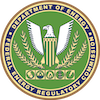The staff of the Federal Energy Regulatory Commission (Commission or FERC) has prepared a draft environmental impact statement (EIS) for the Rover Pipeline, Panhandle Backhaul, and Trunkline Backhaul Projects (or Projects).
The Rover Project would include construction and operation of approximately 510.7 miles of new 24- to 42-inch-diameter natural gas pipeline and appurtenant facilities that include 10 compressor stations, 19 meter stations, 5 tie-ins, 11 pig launcher and receiver facilities 1, and 78 mainline valves in Michigan, Ohio, Pennsylvania, and West Virginia. The Panhandle Backhual and Trunkline Backhual Projects include upgrades and modifications to allow for bi-directional flow of natural gas on their existing pipeline systems. Modifications along the Panhandle system would occur at existing facilities in Michigan, Indiana, and Illinois. The Trunkline system would include modifications and upgrades at existing facilities in Illinois, Tennessee, and Mississippi.
The EIS has been prepared in compliance with the requirements of the National Environmental Policy Act (NEPA), the Council on Environmental Quality regulations for implementing NEPA (40 Code of Federal Regulations [CFR] 1500–1508), and FERC regulations implementing NEPA (18 CFR 380).
The conclusions and recommendations presented in the EIS are those of the FERC environmental staff. Input from the U.S. Environmental Protection Agency, the U.S. Army Corps of Engineers, the U.S. Fish and Wildlife Service, the Ohio Environmental Protection Agency, and the West Virginia Department of Environmental Protection as cooperating agencies was considered during the development of our conclusions and recommendations; however, these agencies could develop their own conclusions and recommendations and would adopt the final EIS per 40 CFR 1506.3 (where applicable) if, after an independent review of the document, they conclude that their permitting requirements have been satisfied.
The FERC staff concludes that construction and operation of the Projects would have some adverse and significant environmental impacts; however, these impacts would be reduced to acceptable levels with the implementation of Rover’s, Panhandle’s, and Trunkline’s proposed mitigation and the additional measures recommended by staff in the draft EIS. This determination is based on a review of the information provided by Rover, Panhandle, and Trunkline and further developed from data requests; field investigations; scoping; literature research; alternatives analyses; and contacts with the federal, state, and local agencies, Native American tribes, and other stakeholders. Although many factors were considered in this determination, the principal reasons are:
- Rover would minimize impacts on natural and cultural resources during construction and operation of its Project by implementing its Upland Erosion Control, Revegetation, And Maintenance Plan; Wetland and Waterbody Construction and Mitigation Procedures; Horizontal Directional Drill Contingency Plan; state-specific Agricultural Impact Mitigation Plans; Unanticipated Discovery Plans; Spill Plan for Oil and Hazardous Materials; Blasting Plan; Winter Construction Plan; and Karst Mitigation Plan.
- Trunkline and Panhandle would minimize impacts on natural and cultural resources during construction and operation of their Projects by implementing FERC’s Upland Erosion Control, Revegetation, And Maintenance Plan; Wetland and Waterbody Construction and Mitigation Procedures, their Spill Prevention and Response Plan, and their Unanticipated Discoveries Plan.
- We would complete Endangered Species Act consultations with the U.S. Fish and Wildlife Service prior to allowing any construction to begin.
- We would complete the process of complying with Section 106 of the National Historic Preservation Act and implementing the regulations at 36 CFR 800 prior to allowing any construction to begin.
- Rover would use trenchless crossing methods for several waterbodies and wetlands. Rover would be required to obtain applicable permits and provide mitigation for unavoidable impacts on waterbodies and wetlands through coordination with the U.S. Army Corps of Engineers and applicable state agencies.
- We are recommending that Rover cross sensitive waterbodies and coldwater fisheries using dry crossing methods.
- We are recommending that Rover finalize with the U.S. Fish and Wildlife Service a Migratory Bird Conservation Plan that includes documentation of its consultation with the U.S. Fish and Wildlife Service regarding any appropriate avoidance, minimization, and compensatory mitigation.
- We are recommending that Rover develop a property owner insurance tracking and mitigation plan.
- We would provide oversight of an environmental inspection and mitigation monitoring program that would ensure compliance with all mitigation measures that become conditions of the FERC authorizations and other approvals. In addition, we developed other site-specific mitigation measures that Rover should implement to further reduce the environmental impacts that would otherwise result from construction of its Project.
Comments on the draft EIS must be received in Washington, DC on or before April 11, 2016. Once the final EIS is issued, the FERC Commissioners will take into consideration staff’s recommendations when they make a decision on the Projects.
- DEIS
- Appendix A
- Appendix B
- Appendix B-1
- Appendix B-1 Part 2
- Appendix B-2
- Appendix B-3
- Appendix C
- Appendix D
- Appendix E
- Appendix F
- Appendix G
- Appendix G-2
- Appendix G-2 Part 2
- Appendix G-3
- Appendix G-4
- Appendix G-5
- Appendix G-6
- Appendix G-7
- Appendix G-8
- Appendix H
- Appendix I
- Appendix I-2
- Appendix J
- Appendix K
- Appendix L
- Appendix M
- Appendix N
- Appendix O
- Appendix P
- Appendix Q
- Appendix R
- Appendix S
- Appendix T
- Appendix U
1A pig is an internal tool that can be used to clean and dry a pipeline and/or to inspect it for damage or corrosion.
